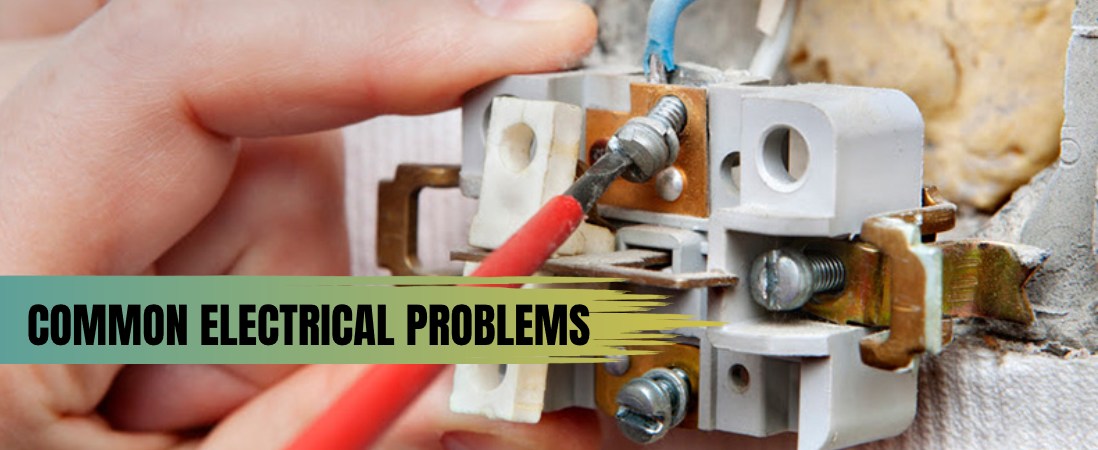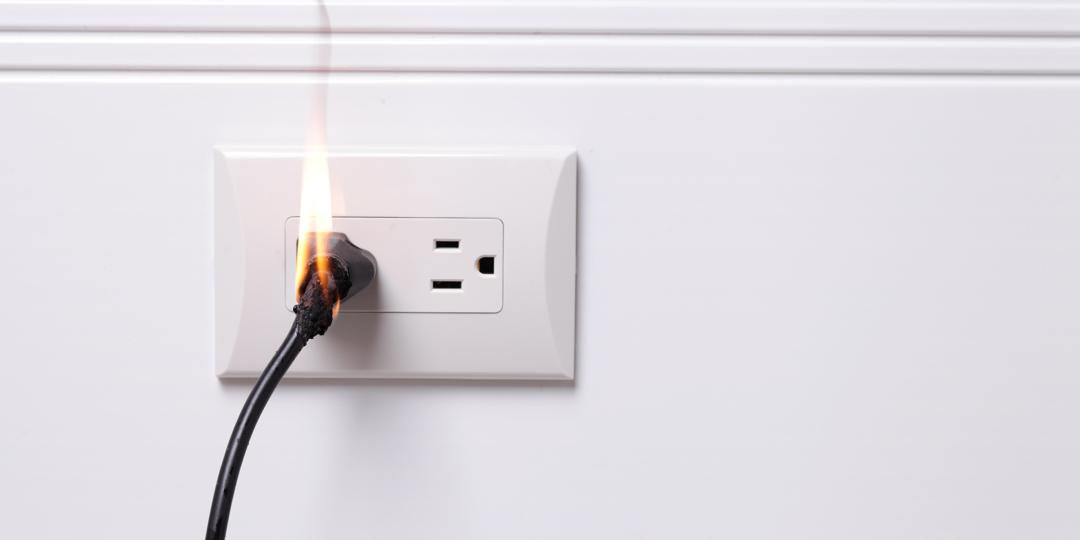What You Required to Understand About Common Repair Providers Used by an Electrical contractor
Comprehending the common fixing solutions used by electrical contractors is important for property owners and businesses alike. Problems such as flickering lights, damaged outlets, and circuit breaker problems can greatly influence security and effectiveness. Electricians not only troubleshoot these worries however also examine overall electrical systems for conformity and security. Their knowledge extends to power efficiency upgrades and normal examinations. Understanding what to anticipate can prepare one for reliable maintenance and enhancements in their electric systems.
Recognizing Electric Evaluations and Their Significance
Electrical assessments function as a significant secure for commercial and property properties. These evaluations are carried out by certified electrical contractors that meticulously evaluate the entire electrical system to guarantee compliance with safety requirements and local codes. Evaluations identify potential risks such as out-of-date electrical wiring, overloaded circuits, and incorrect grounding, which can result in major risks including electrical fires and equipment failing.

Common Concerns With Circuit Breakers

Circuit breakers play a crucial role in electrical systems by shielding against overloads and short circuits. They can experience a number of typical problems that may need focus. One prevalent issue is tripping, where the breaker closes off power as a result of an overload or fault, which can suggest a hidden circuitry problem or the demand for a greater capability breaker. Another issue is a breaker that will not reset, frequently triggered by consistent mistakes in the circuit or interior damages to the breaker itself. In addition, a breaker may show indicators of getting too hot, which can show up as discoloration or a burning smell, posing a fire danger (san angelo tx electrician). Ultimately, some breakers may fall short to journey when they should, subjecting the electric system to threats. Routine maintenance and monitoring are essential to assure that circuit breakers function appropriately and supply the required protection for electric systems
Fixing Flickering Lights
When lights flicker suddenly, it can be a resource of frustration and problem for home owners. This concern typically signals underlying electric problems that might need professional interest. Generally, flickering lights can come from faulty or loosened connections in the circuitry, which may interfere with the circulation of electricity. In addition, if multiple lights flicker all at once, it might show an issue with the circuit and even an overloaded breaker.
Another factor to consider is the kind of light bulbs utilized; for instance, LED light bulbs may flicker otherwise suitable with dimmer buttons. Home owners need to also examine the voltage supply, as changes can create lights to dim or flicker. If the flickering persists in spite of these checks, it is recommended to consult a qualified electrical expert. Prompt troubleshooting can stop more electrical problems and assure a much safer home setting.
Repairing and Changing Outlets
Electrical outlets are essential elements of any home, giving power for different tools and devices. Over time, outlets can wear, become loose, or sustain damages, leading to security hazards or malfunctioning devices. Common issues include electrical outlets that do not function, are cracked, or have actually revealed circuitry. When an electrical outlet shows indications of wear or failure, it is important to seek professional aid from an electrical contractor.
Electrical experts can examine the problem of outlets, identifying whether repair or replacement is necessary. Fixing outlets may involve tightening up links or replacing internal components, while replacing an outlet normally includes removing the old device and setting up a new one that fulfills present security standards. Updating to contemporary electrical outlets can additionally offer additional safety and security functions, such as ground fault circuit interrupters (GFCIs) Prompt interest to outlet problems can help keep electric safety and assure the trusted operation of household tools.
Dealing With Overloaded Circuits


Once the issue is recognized, services might consist of rearranging the electrical lots by unplugging specific tools or attaching them to various circuits. Sometimes, an electrical contractor may recommend installing extra circuits to fit power needs much more safely.
Regular residential electrical repair evaluations can help avoid overloads by guaranteeing that circuits are not being pushed beyond their limits. Homeowners should consult with a licensed electrician to assess their electrical systems and make essential changes, thereby boosting safety and security and integrity in their homes.
Upgrading Electrical Panels
Upgrading electric panels is frequently needed for homes with outdated systems that have a hard time to satisfy contemporary power needs. As innovation advancements, households progressively count on numerous tools and devices, which can go beyond the capacity of older panels. An electrician can assess the existing panel and figure out if an upgrade is needed to assure safety and security and performance.
This process normally entails changing the old panel with a brand-new one that has a greater amperage score, enabling much better circulation of electrical loads. In addition, upgrading may include installing new breaker and guaranteeing compliance with present electrical codes.
House owners might see better performance of their electrical systems post-upgrade, consisting of lowered flickering lights and decreased threat of circuit overloads (san angelo tx electrician). This important service not only enhances functionality yet likewise promotes safety by decreasing the probability of electric fires and equipment damages, making it a smart financial investment for any modern-day household
Ensuring Appropriate Lighting Installations
Proper lighting setups are necessary for both capability and looks in any area. Electrical experts must think about different types of illumination components to meet particular demands while also focusing on safety and security throughout the setup process. Recognizing these elements is vital for attaining safe and efficient lights solutions.
Kinds of Lighting Fixtures
Lights components play a crucial function in creating an inviting and useful atmosphere within any kind of space. They come in various types, each offering visual choices and distinctive objectives. Ceiling-mounted fixtures, such as chandeliers and flush mounts, supply general illumination while including design. Wall surface sconces offer accent lights, boosting style and developing setting. Recessed illumination is perfect for a sleek, modern appearance, effectively highlighting details areas. Task lights, consisting of desk lights and under-cabinet lights, concentrates on performance for activities like reading or cooking. Outside fixtures, such as porch lights and landscape illumination, improve security and curb appeal. Understanding the variety of lighting fixtures helps individuals choose the ideal options, making sure both elegance and practicality in their atmospheres.
Safety Considerations in Installation
When installing numerous kinds of illumination components, safety and security considerations should be focused on to assure both performance and defense. Electricians ought to always begin by confirming that the power supply is transformed off to avoid electrical shocks. Appropriate grounding of fixtures is important to prevent short circuits and potential fires. Additionally, making use of the right wattage and kind of bulbs is important to avoid getting too hot. Installations ought to abide with neighborhood electrical codes, and fixtures ought to be installed safely to stay clear of falls or damages. Appropriate spacing and placement are essential for perfect illumination while decreasing glow. Routine assessments are suggested to preserve security standards and validate that all parts function correctly, guarding against future hazards.
Often Asked Inquiries
Exactly how Do I Select the Right Electrical Contractor for My Needs?
Choosing the best electrician entails reviewing credentials, experience, and consumer reviews. It's a knockout post necessary to verify licensing and insurance while obtaining multiple quotes to ensure competitive pricing and a clear understanding of the services needed.
What Are the Indications I Need to Call an Electrician?
Signs indicating the need to call an electrical contractor include consistent flickering lights, uncommon humming noises, frequent breaker trips, burned smells, and cozy electrical outlets. These signs and symptoms suggest underlying electrical concerns calling for professional evaluation and repair service.
Just How Much Do Usual Electrical Repairs Normally Price?
The price of typical electric repair services varies commonly, generally varying from $100 to $500, depending on the complexity of the issue, materials needed, and labor included. Property owners ought to obtain several quotes for exact budgeting.
Are There DIY Electric Fixes I Can Securely Try?
Numerous individuals consider attempting DIY electric fixings, but security is vital. Basic tasks like replacing lights or outlets might be viable, yet care is essential, and expert aid is advised for complex concerns and high-voltage systems.
How Frequently Should I Set Up Electric Upkeep?
Arranging electrical upkeep every one to three years is suggested for ideal safety and security and performance. Regular assessments can identify potential problems, guaranteeing systems operate correctly and reducing threats connected with electrical failures or hazards.
These analyses are conducted by qualified electrical experts who carefully examine the whole electrical system to guarantee compliance with safety and security requirements and local codes. Circuit breakers play a vital duty in electrical systems by shielding against overloads and short circuits. Overloaded his response circuits posture significant safety dangers in household electric systems, as they can lead to getting too hot, tripped breakers, and even electrical fires. Once the problem is recognized, options may include redistributing the electrical tons by unplugging particular tools or attaching them to different circuits. Home owners might see improved efficiency of their electrical systems post-upgrade, including reduced flickering lights and lessened threat of circuit overloads.